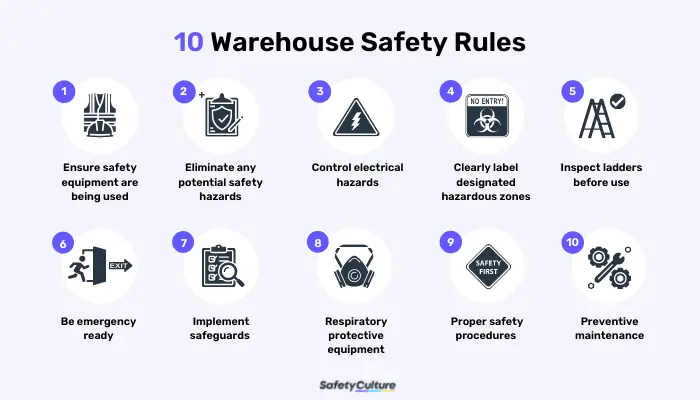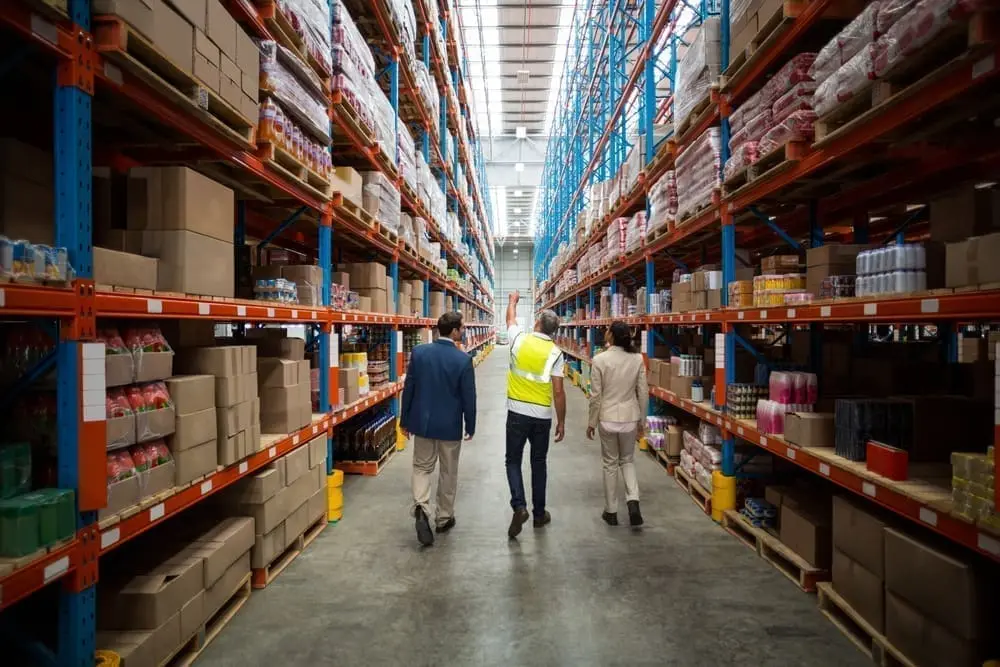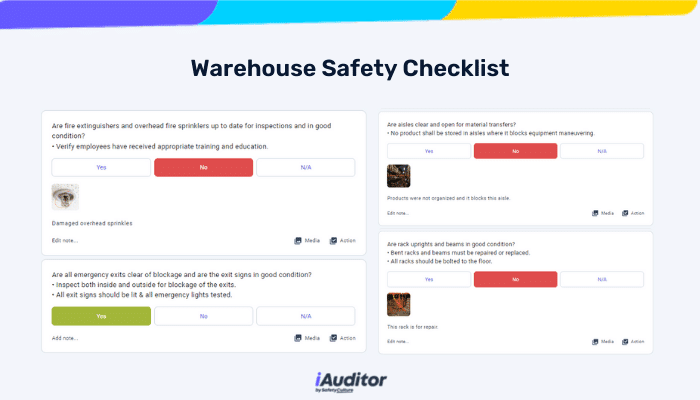What are Warehouse Safety Rules?
Creating warehouse safety rules depend on company size, policy, and procedures. However, implementing rules based on the most frequently cited violations can be a viable starting point to ensure baseline OSHA compliance.
Here are general examples of 10 warehouse safety rules you can apply in your specific context:

1. Ensure safety equipment are being used
Take advantage of safety equipment such as PPE’s and other required equipment relating to fire protection, design, maintenance, and use of powered industrial trucks. Having them on site and actually using them goes a long way in keeping workers safe and getting your money’s worth.
2. Eliminate any potential safety hazards
Classify the potential hazards of chemicals and communicate information concerning hazards and appropriate protective measures to warehouse staff. This can be done by doing risk assessments and other relevant methods concerned in identifying and evaluating hazards.
Create your own Warehouse Safety Checklist
Build from scratch or choose from our collection of free, ready-to-download, and customizable templates.
Browse Warehouse Safety Checklists3. Control electrical hazards
Promote safe electrical wiring methods, specifically when dealing with temporary wiring, cable trays, and open wiring on insulators. Cover electrical installations and utilization equipment installed or used within or on the warehouse, its structures, and other areas near the premises.
4. Clearly label designated hazardous zones
Safety signs and labels will help promote awareness for the people within hazardous zones and prevent accidents and injury from occurring. In a warehouse, both employees and visitors might be exposed to dangerous equipment and areas. In which case, such equipment should be stored away with proper labels and the appropriate warning signage. Some examples of safety signs that can be used are:
- Danger signs
- Warning signs
- Caution sign
- Biological hazard signs
- Notice signs
- General safety signs or safety instructions
- Fire safety signs
- Admittance signs
5. Inspect ladders before use
For safe use, it is important to inspect ladders initial use in each work shift. This will help in reducing accidents caused by missed defects. Ensure that they are parallel, level, and uniformly spaced when in position for use. See ladder safety rules here.
6. Be emergency ready
Maintain operational features for exit routes like adequate lighting, appropriate marking, and operable employee alarm system. Employees should also be aware of emergency protocols in place.
7. Implement safeguards
Keep secure from potential danger for mechanical power-transmission apparatus such as machine guarding, regular inspections, and proper lubrication.
8. Respiratory protective equipment
Provide suitable respirators to warehouse personnel when such equipment is necessary to protect their health as a part of the respiratory protection program.
9. Proper safety procedures
Develop and implement safety protocols or procedures to guide employees to work safely. Depending on the hazards and risks present in the warehouse, additional precautionary measures might be required.
10. Preventive maintenance
Most accidents and injuries are caused by poor maintenance. Machineries, equipment, tools, and the building structure itself should be regularly inspected and maintained. Not only does this keep employees and visitors safe, it also prevents costly unplanned downtime from occurring.
Improve your EHS Management
Cultivate a safe working environment and streamline compliance with our EHS solutions.
Explore now



